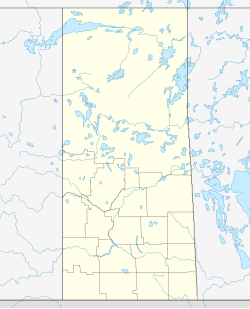Marcelin | |
|---|---|
Village | |
Location of Marcelin in Saskatchewan | |
| Coordinates: 52°55′37″N106°47′28″W / 52.927°N 106.791°W | |
| Country | Canada |
| Province | Saskatchewan |
| Region | Saskatchewan |
| Census division | 16 |
| Rural Municipality | Blaine Lake No. 434 |
| Post office Founded | 1904 |
| Government | |
| • Mayor | Norman Desjardins |
| • Administrator | Leanne McCormick |
| • Governing body | Marcelin Village Council |
| Area | |
• Total | 1.32 km2 (0.51 sq mi) |
| Population (2011) [1] | |
• Total | 158 |
| • Density | 119.5/km2 (310/sq mi) |
| Time zone | CST |
| Postal code | S0J 1R0 |
| Area code | 306 |
| Highways | Highway 40 Highway 786 |
| Website | Official website |
| [2] [3] [4] | |
Marcelin (2016 population: 153) is a village in the Canadian province of Saskatchewan within the Rural Municipality of Blaine Lake No. 434 and Census Division No. 16. It was named after the first postmaster Antoine Marcelin in 1904. [2]
Contents
Marcelin is the administrative headquarters of the Muskeg Lake Cree First Nations band government. [5] During World War II, the Muskeg Lake reserve had the highest rates of Indigenous enlistment in the country, and Mary Greyeyes became the first First Nations woman to enlist in the Canadian Forces. [6]


